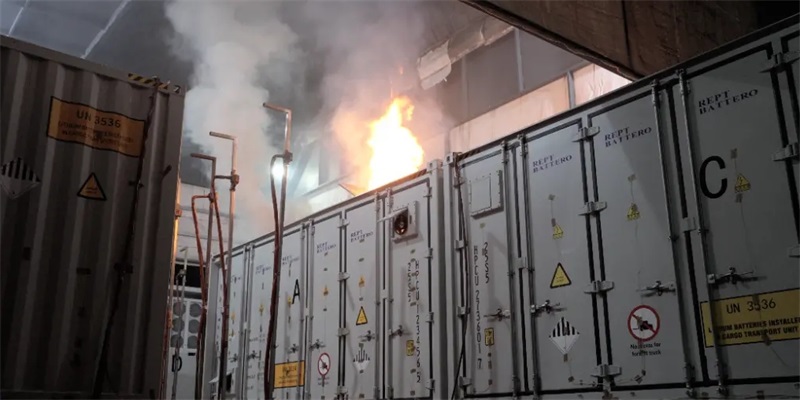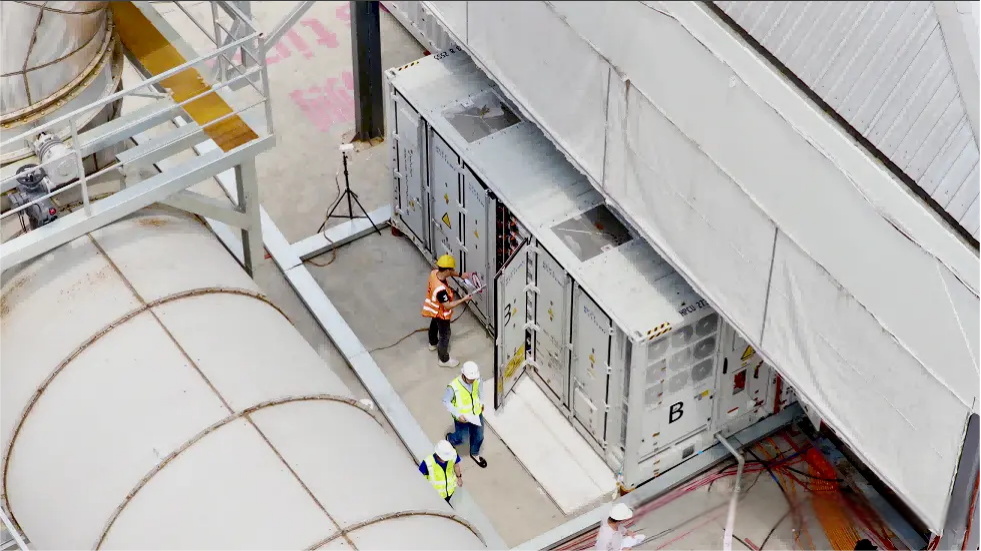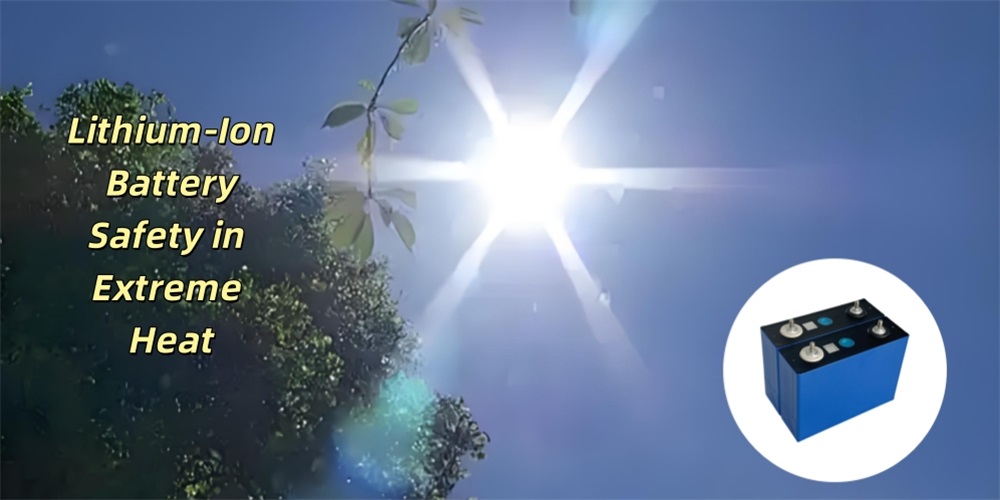REPT BATTERO Energy Storage System Successfully Completes 24-Hour Extreme Fire Resistance Test
REPT BATTERO has pushed the safety boundaries of energy storage with an extreme fire test on its Powtrix® 5MWh battery container. Witnessed by CSA, U.S. fire experts, and global clients, the fully charged unit withstood 14 hours of burning while preventing thermal runaway—simulating worst-case scenarios under stringent standards like CSA/ANSI C800:25, NFPA 855, and UL 9540A.

Extreme testing conditions, pushing the boundaries of product safety
5MWh full-capacity discharge triggered 3-hour sustained combustion, with five types of flames burning for 14 hours
REPT BATTERO conducted an extreme fire test on a fully charged 5MWh battery container—the most severe condition for energy storage systems, where thermal runaway releases maximum energy with highest risks. The test simulated worst-case scenarios by combining internal heating and external propane flames, triggering self-sustained combustion after 3+ hours.
The 14-hour burn fully discharged ~5,000 cells, exposing the unit to Class A-E fires (solids, liquids, gases, metals, live electronics) while adjacent containers endured intense heat. This validated the system’s passive safety under extreme multi-hazard conditions.
Bilateral extreme spacing set at 10cm, ensuring adjacent safety in high-density layouts
REPT BATTERO's Powtrix® system passed an extreme fire propagation test in ultra-dense 10cm-spaced quad-cabinet layout (A/B/C). Despite 1,380°C flames in the target unit, adjacent cabinets maintained safe sub-57°C internal temperatures, preventing thermal runaway spread and setting new industry safety benchmarks for compact installations.
Rear adjacent cabinet fully loaded & charged under maximum thermal stress conditions
REPT's test simulated real-world worst-case conditions: the rear adjacent cabinet was fully loaded and charged (100% SOC), positioned closest to flames with maximum heat exposure and minimal cooling - representing the most hazardous operational state.
Safety tested without fire suppression systems
REPT conducted an extreme "unassisted safety" test on its Powtrix® energy storage container by deliberately disabling all active fire suppression systems while keeping detection/alarm functions operational. This simulated worst-case failure scenarios, proving the system's passive containment capabilities could prevent thermal runaway propagation without external intervention. Notably, fire alarms maintained continuous operation throughout the 1380°C blaze, validating failsafe reliability under actual combustion conditions.
Innovative multi-fault testing methodology simulates more comprehensive real-world scenarios

Multi-fault scenario testing with coupled hazard factors
The test employed simultaneous internal multi-point heating and external ~2000°C jet flames to trigger thermal runaway, establishing a complete accident chain: "thermal runaway → open fire → sustained combustion". This approach goes beyond single-point failure testing by replicating complex early-fire scenarios with coupled thermal-electrical factors, breaking through conventional single-variable test limitations.
Bottom ignition triggering intensifies fire uncertainty
The bottom-ignition test simulated extreme fire scenarios by triggering upward flame propagation through battery arrays, creating complex thermal dynamics to rigorously evaluate containment performance. Over 600 sensors monitored temperature gradients while integrated systems captured BMS data, emissions, and implemented real-time gas filtration—meeting stringent environmental standards praised by U.S. safety experts.
Post-test inspection revealed:
1. Triggered unit: Complete cell combustion with no residue; steel structure intact, no collapse.
2. Adjacent rear/side units: Exterior and interior undamaged; battery data and BMS fully functional.
3. Opposite unit: Fire-facing surface discolored by heat, but internal cells unharmed with normal voltage and BMS operation.
Despite ultra-dense spacing, REPT BATTERO's Powtrix® system successfully localized the fire to a single unit, preventing thermal runaway propagation—setting a new benchmark for compact energy storage safety.
REPT's extreme fire test redefined energy storage safety standards through innovative, real-world validation of its battery container's passive safety capabilities under unprecedented conditions. This benchmark demonstration highlights REPT's technical leadership while advancing industry-wide safety development.

